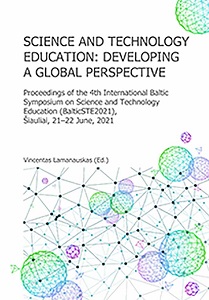INCREASED STUDENT PERFORMANCE ON PHYSICS CONCEPT INVENTORY TEST AFTER STUDENT-CENTRED APPROACH IN UNIVERSITIES OF LATVIA
INCREASED STUDENT PERFORMANCE ON PHYSICS CONCEPT INVENTORY TEST AFTER STUDENT-CENTRED APPROACH IN UNIVERSITIES OF LATVIA
Author(s): Ilva Cinite, Girts Barinovs
Subject(s): Social Sciences, Education, School education, Pedagogy
Published by: Scientia Socialis, UAB
Keywords: STEM education quality; conceptual understanding; student-centred approach;
Summary/Abstract: Education research has repeatedly shown that active learning in physics is pedagogically more efficient than traditional lecture courses. Widespread application of the active learning is slowed down by the lack of data on the performance of the active learning in widely varying circumstances of different educational systems. We measured the level of understanding of basic physics concepts using Force Concept inventory for students who enroll at different universities in Latvia in calculus-based and non-calculus-based groups and compared the student performance to the pre-test results elsewhere in the world. We measured the growth of concept inventory test results and studied the dependence of the growth on the teaching approach used by university lecturers. About 450 undergraduate students from 12 groups of science and engineering courses taught by 8 lecturers were involved in the study at three universities in Latvia. The Force Concept Inventory multiple-choice test was translated to Latvian and used for pre-/post-tests. The pre-test results showed that the maximum of the distribution of correct answers for non-calculus groups is around 20%, which is the value obtained by the random guessing of test answers, whereas the pre-test results of calculus-based groups was about 50% of correct answers. The test score after taking post-test confirmed that the growth of students’ tests results is closely related to the teaching approach chosen by lecturer, showing that in order to provide physics graduates with a good conceptual understanding of physics, student centred teaching approach was crucial. The use of concept inventories in undergraduate physics education to measure the progress of learning appears to be particularly important in the current situation with a small number of students in physics and a critically small number of future physics teachers, when efficiency of teaching is of crucial importance.
- Page Range: 39-48
- Page Count: 10
- Publication Year: 2021
- Language: English
- Content File-PDF

